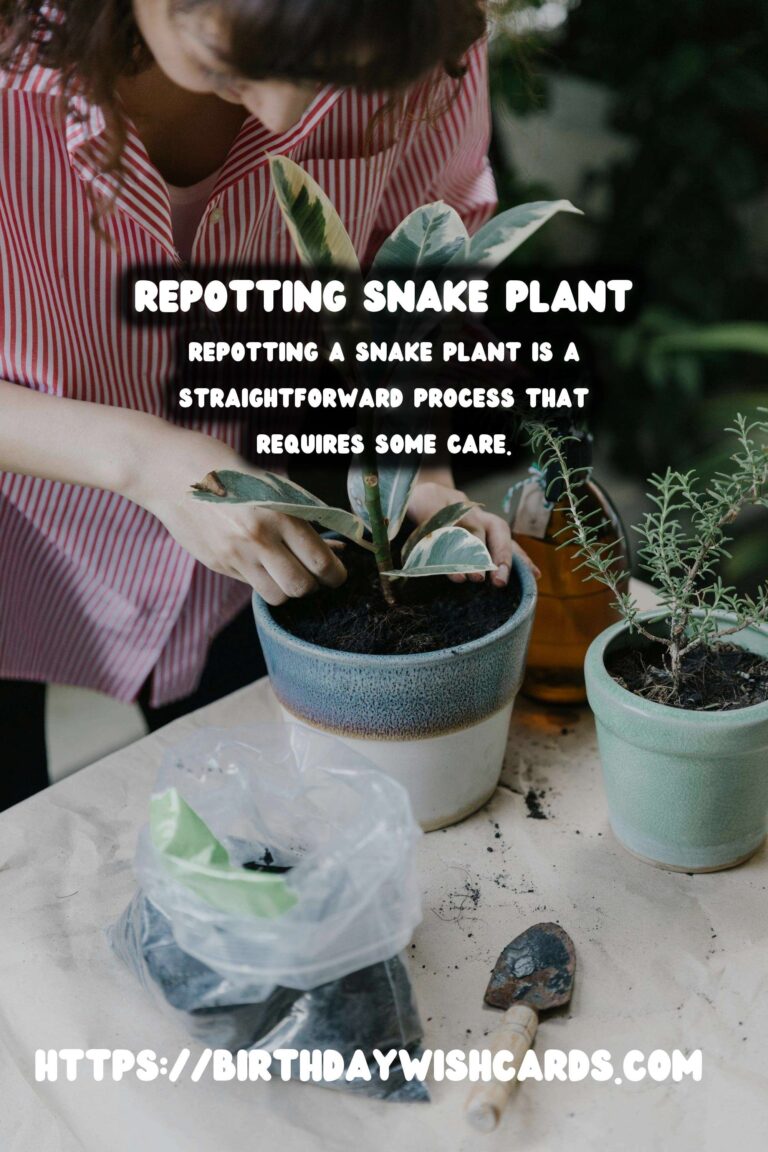
Snake plants, also known as Sansevieria or mother-in-law’s tongue, are popular houseplants due to their hardiness and air-purifying qualities. Understanding when to repot your snake plant is crucial for its health and growth. In this comprehensive guide, we will explore the signs that indicate it’s time to repot, how to repot snake plants, and tips for ongoing care.
Recognizing the Signs: When to Repot Your Snake Plant
Knowing when to repot your snake plant is essential for maintaining its health. Here are some signs to look out for:
Root Bound: If you notice roots growing out of the drainage holes or emerging at the surface of the soil, your snake plant is likely root bound and needs a larger pot.
Slow Growth: Snake plants are naturally slow growers, but if you notice a significant decrease in growth or the plant seems stunted, it may need more space to expand.
Discolored Leaves: Yellowing or wilting leaves can be a sign that the plant is not receiving enough nutrients, which can occur if the soil is depleted and compacted.
How to Repot Your Snake Plant
Repotting a snake plant is a straightforward process, but it requires some care to ensure a successful transition:
Step 1: Choose a Pot. Select a pot that is one size larger than the current one. Ensure it has drainage holes to prevent waterlogging.
Step 2: Prepare the Soil. Use a well-draining potting mix, preferably one designed for cacti and succulents, to prevent overwatering.
Step 3: Remove the Plant. Gently remove the snake plant from its current pot. If the plant is stuck, tap the sides of the pot or carefully loosen the soil around the edges.
Step 4: Trim the Roots. Inspect the roots and trim any that are damaged or excessively long. This encourages healthy new growth.
Step 5: Plant in New Pot. Place the snake plant in the new pot and fill it with soil. Ensure the root ball is covered, but avoid burying the plant too deep.
Step 6: Water Sparingly. After repotting, water the plant lightly to settle the soil. Avoid overwatering, as snake plants are prone to root rot.
Ongoing Care for Your Snake Plant
Once your snake plant is repotted, here are some tips for ongoing care:
Light: Snake plants prefer indirect light but can tolerate low light conditions. Avoid direct sunlight, which can scorch the leaves.
Watering: Allow the soil to dry between waterings. Overwatering can lead to root rot, so it’s better to underwater than overwater.
Temperature: Keep your snake plant in a warm environment, ideally between 70°F and 90°F. Avoid placing it near drafts or cold windows.
Fertilization: Feed your snake plant with a balanced liquid fertilizer during the growing season (spring and summer) to promote healthy growth.
Conclusion
Repotting your snake plant at the right time is essential for its health and growth. By recognizing the signs and following the proper steps, you can ensure your snake plant thrives and continues to enhance your indoor environment. With proper care, your snake plant will remain a beautiful and resilient addition to your home.
Snake plants are popular houseplants due to their hardiness and air-purifying qualities. Knowing when to repot your snake plant is essential for maintaining its health. If you notice roots growing out of the drainage holes, your snake plant likely needs a larger pot. Repotting a snake plant is a straightforward process that requires some care. After repotting, water the plant lightly to settle the soil. Snake plants prefer indirect light but can tolerate low light conditions. Repotting your snake plant at the right time is essential for its health and growth. 









#SnakePlants #Houseplants #Gardening #PlantCare #Repotting




